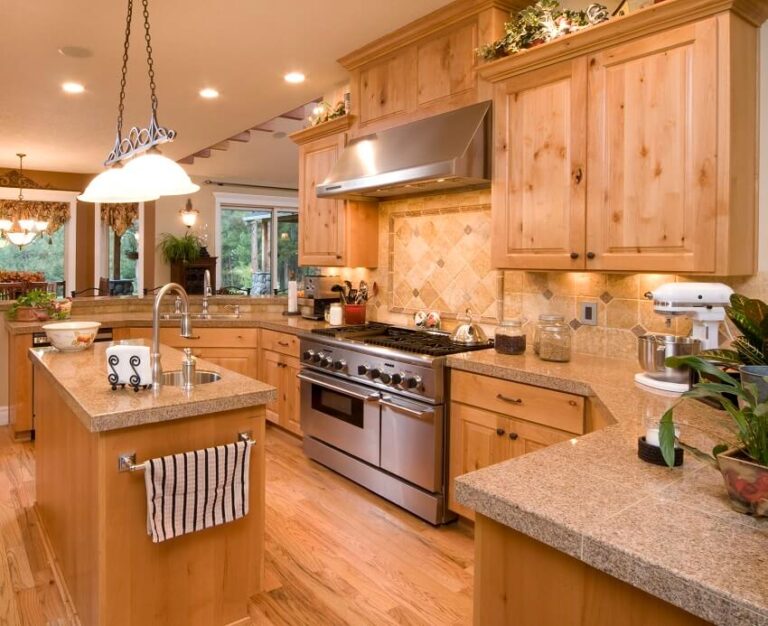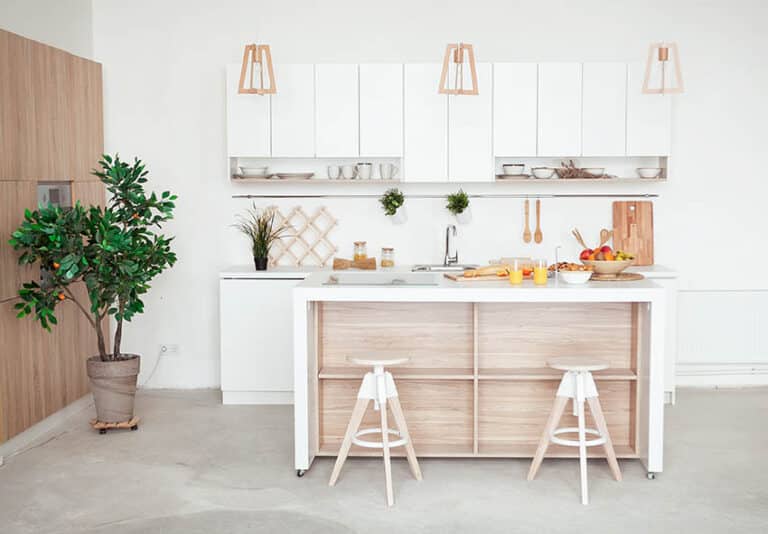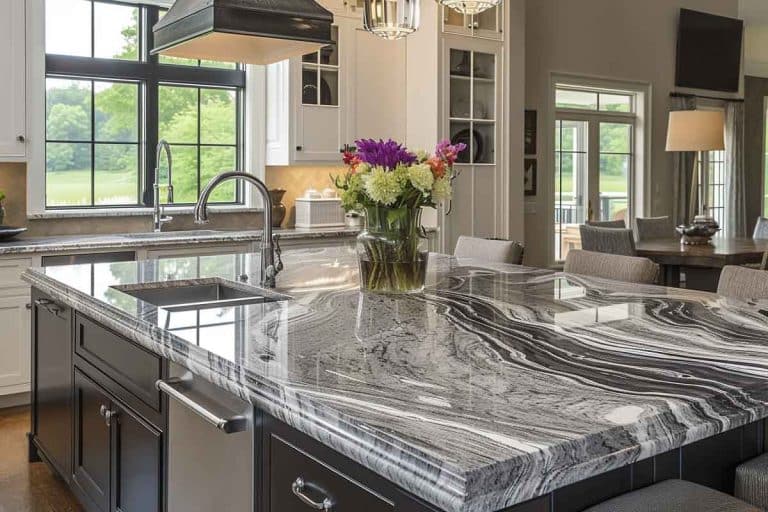Ash Kitchen Cabinets (Benefits & Wood Care Tips)
Ash kitchen cabinets continue to be a big hit in modern interiors as natural finishes become even more popular today. Even though they have been in use for many years, Ash kitchen cabinets remain resilient despite the rising popularity of laminated cabinets. This is owing to their aesthetic versatility and many other woodworking benefits.
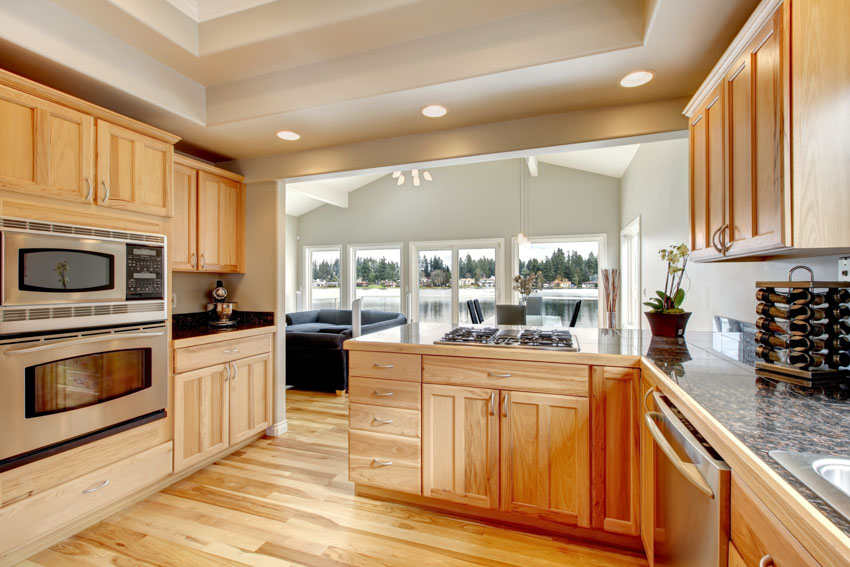
Ash kitchen cabinetry is characterized by its light wash and soft yellowish color, and it’s easy to mix and match with contemporary materials.
Is Ash a Good Material for Cabinets in the Kitchen?
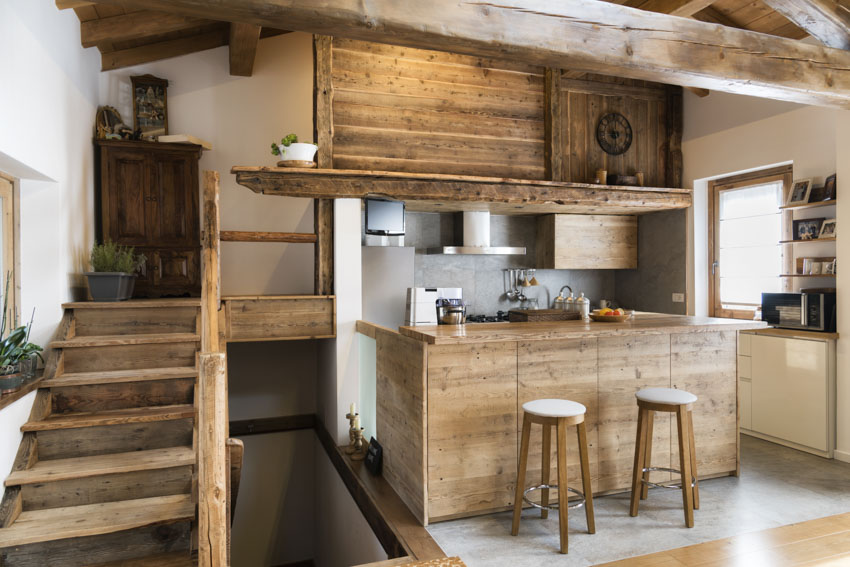
Yes, ash wood is great for kitchen cabinets as it is strong and has a higher hardness rating than most hardwood cabinets. These wood kitchen cabinets are favored in commercial kitchens since they won’t easily dent and sag even when holding heavy items. Moreover, they’re affordable, and the finish can effortlessly adapt to a wide range of styles.
Ash wood is highly durable and can also be crafted into unique intricate forms, making it among the types of kitchen cabinet materials that are easier to work with. Ash wood is made up of dense grains that give it the best quality among other wood materials.
Benefits of Ash Wood Cabinets
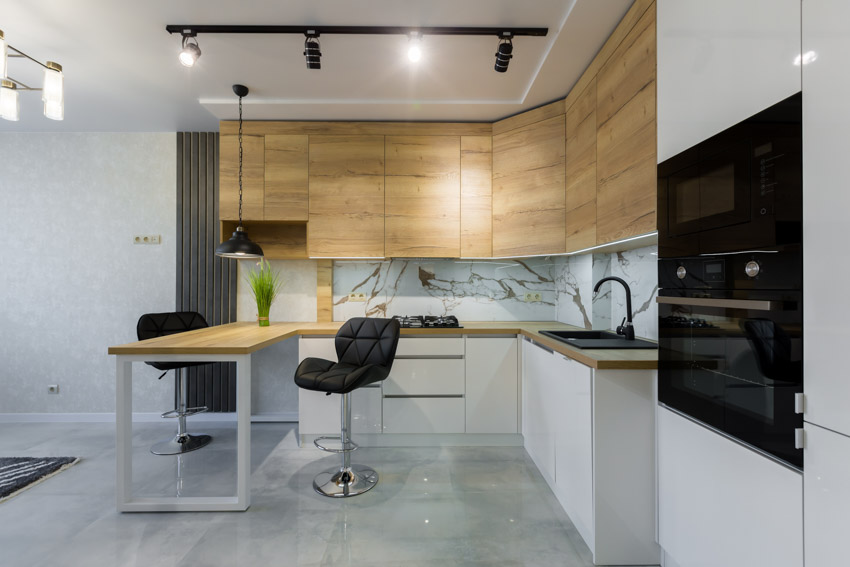
An Affordable Hardwood Material: The price is one thing that puts off homeowners who want to go for a hardwood material. Ash kitchen cabinets allow you to have the coveted beauty of wood with its affordable price much lower than most hardwood cabinets.
RTA (ready to assemble) ash wood kitchen cabinets range from $60 to $200 per linear foot, while custom solid wood kitchen cabinets made from the said material cost $500 to $1,200 per linear foot.
The most popular hardwood kitchen storage units are maple and oak. Maple cupboards cost $5,000 to $30,000 while oak costs between $1,500 and $4,000.
Of course, costs will vary based on design, such as added glass fronts, handcrafted finishes, and trim patterns used.
Shock-Resistant: With a very dense thickness, you avoid denting and other impact damage caused by everyday use. The hardness of this type of wood makes it popular in commercial kitchens. In addition, the high density allows everyday polishing and cleaning without damage, which means you maintain a smooth finish throughout its service life.
A Very Hard Material: The Janka hardness (scale in measuring the hardness of a wood species) Ash wood has a Janka hardness of 1320, making it harder than oak, which has a Janka scale of 1290, but softer than maple, which has a Janka scale of 1450.
As it is considered one of the hardest wood species, you can place heavy items inside your ash kitchen cabinet without worrying about buckling or cracking, provided that it is made with quality craftsmanship.
A Beautiful Wood Surface: Unlike most hardwood species, ash wood is not overbearing. The high-quality wood has a characteristic that’s appealing because of its light color and even surface, and boasts among the finest types of wood grain patterns out there.
Versatile Aesthetic: Aside from being a desirable material for craftsmen due to its hard-wearing surface, ashwood kitchen storage units have a light brown color with soft marble-like veining, which sits well with both contemporary and traditional styles.
The even graining of ashwood also makes it adaptable even to minimalist aesthetics. Apart from the graining, you’ll find a good number of varieties of common American ashes, such as Blue, Green, Pumpkin, Manchurian, European, Mountain, and Narrow Leaved Ashwood.
Less Maintenance and Cleaning: Storage units with this material require less maintenance, especially if they are treated with adequate layers of sealant. With a hard surface, you can clean your wooden
kitchen often and even with medium to hard brushes.
Can Ash Cabinets Be Painted?
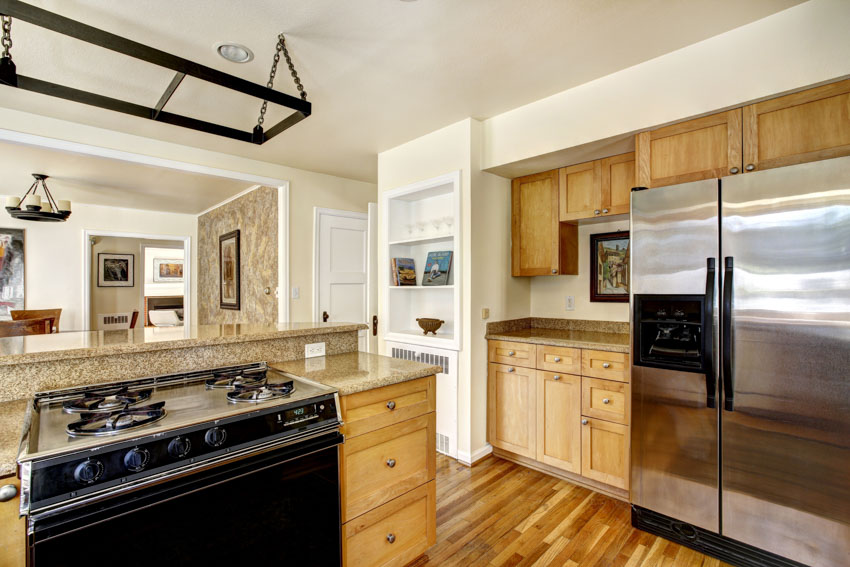
Yes, storage units made from this hardwood adhere well with paint when proper surface preparation has been made. Treatment is also needed to be applied, such as moisture-resistant or waterproof coating to ensure that water or moisture won’t seep through the cabinet surface.
The best finish to apply when painting kitchen storage units is a semi-gloss or gloss finish with latex-based paint. The glossy finishes are recommended as they help to reflect light and make the surface even more durable.
There are wood paint and stains that can be used without losing the texture of your cabinet.
How Does Ash Wood Stain?
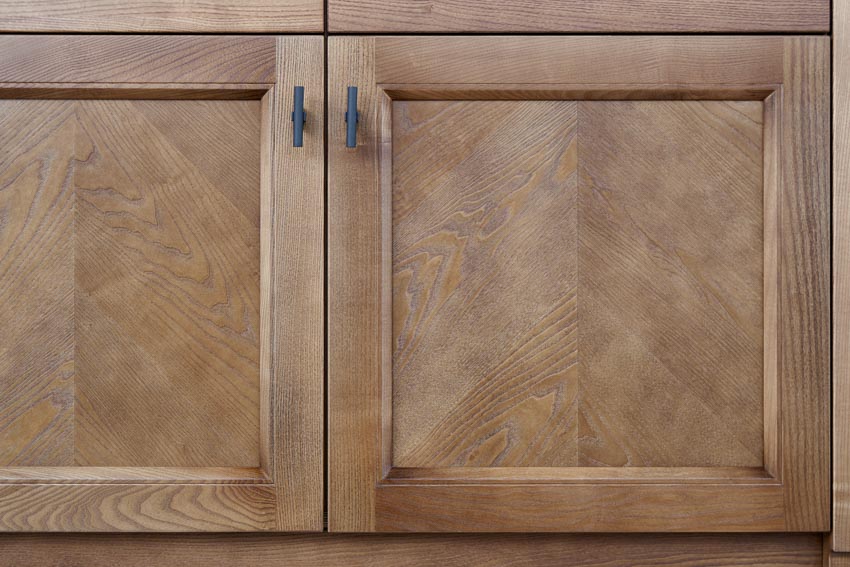
Ashwood surface stains well and will accept any stain color since the surface has large pores, which allows the liquid application to be absorbed easily.
For an even application, use oil stains to prevent a blotchy surface. Even when stained, an ashwood kitchen cabinet will look pristine with its uniform graining and texture.
The easiest woods to stain are ashwood and maple cabinets. Thanks to its large open pores, it readily absorbs stains and allows pigments to penetrate the surface easily. This usually results in lovely stained finishes.
How Do You Clean Ash Cabinets?
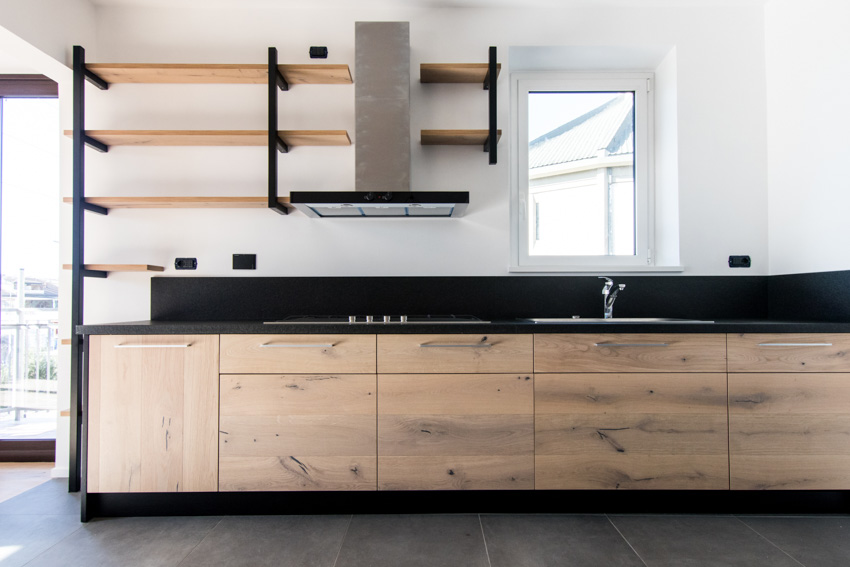
Regular Cleaning Process: When it comes to cleaning greasy surfaces, vinegar is the go-to natural cleaner. Fill a spray bottle halfway with vinegar and half with warm water. Mist on drawers, then wipe clean with a soft cloth after a minute or two.
This is an optional step. To clean extremely grimy drawers, add several drops of liquid dishwashing detergent to the vinegar and water solution.
Removal of Stains: Make a vinegar and salt paste. Scrub the stained area lightly with a small brush dipped in the paste. Scrubbing too hard or with steel wool will scratch its surface. Rinse the paste with water and pat dry with a clean towel.
You can also scrub the stain with baking soda and a wet sponge. To avoid scratching the cabinet surface, use a soft toothbrush or a scrub brush with nylon bristles.
After cleaning, a mixture of vegetable oil and vinegar is recommended. Mix equal amounts of vegetable oil and vinegar and lightly coat cabinet surfaces. With a clean, soft cloth, rub it in. Buff the surface until it looks shiny.
Ash Vs Oak Cabinets
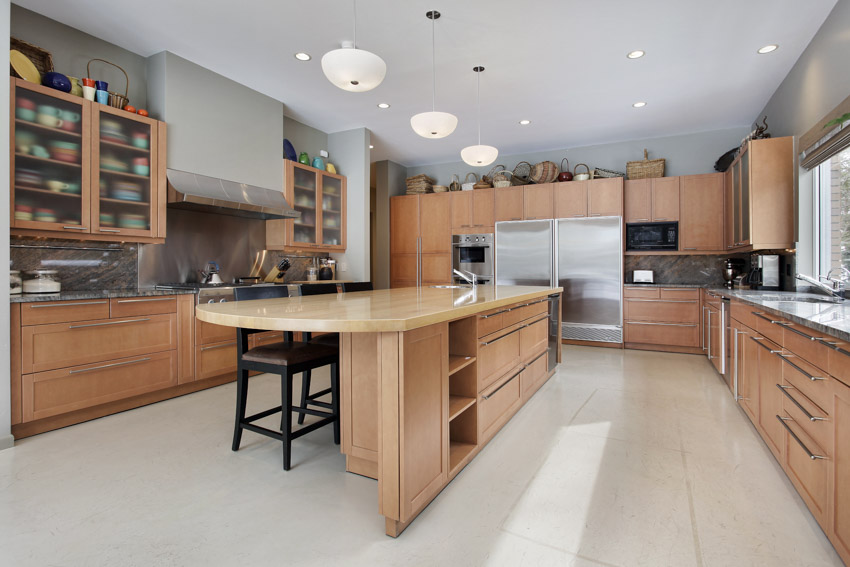
Ashwood exceeds oak in durability as it’s much stronger and pliable. It is much lighter in the shade, making culinary spaces look bright and ventilated.
The main difference between oak and ashwood kitchen storage units is immediately seen in the timber color, as ashwood has a much lighter coloring than oak. Another distinguishing feature is that the latter has radial grains; therefore, when looking at the timber from one side, it will show only one pattern.
Meanwhile, oak woods are distinguished by the radial pattern, especially when looking perpendicular to the grain. Moreover, ashwood kitchen storage units are much sturdier and more durable than oak cupboards. Both ashwood and oak belong to the hardwood species.
See more related content in our article about the paint colors with oak kitchen cabinets on this page.

